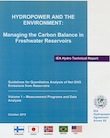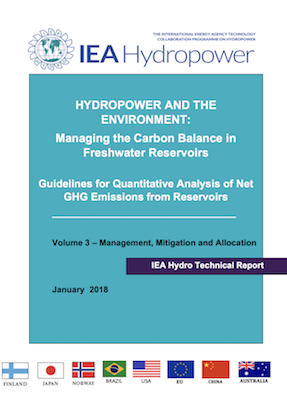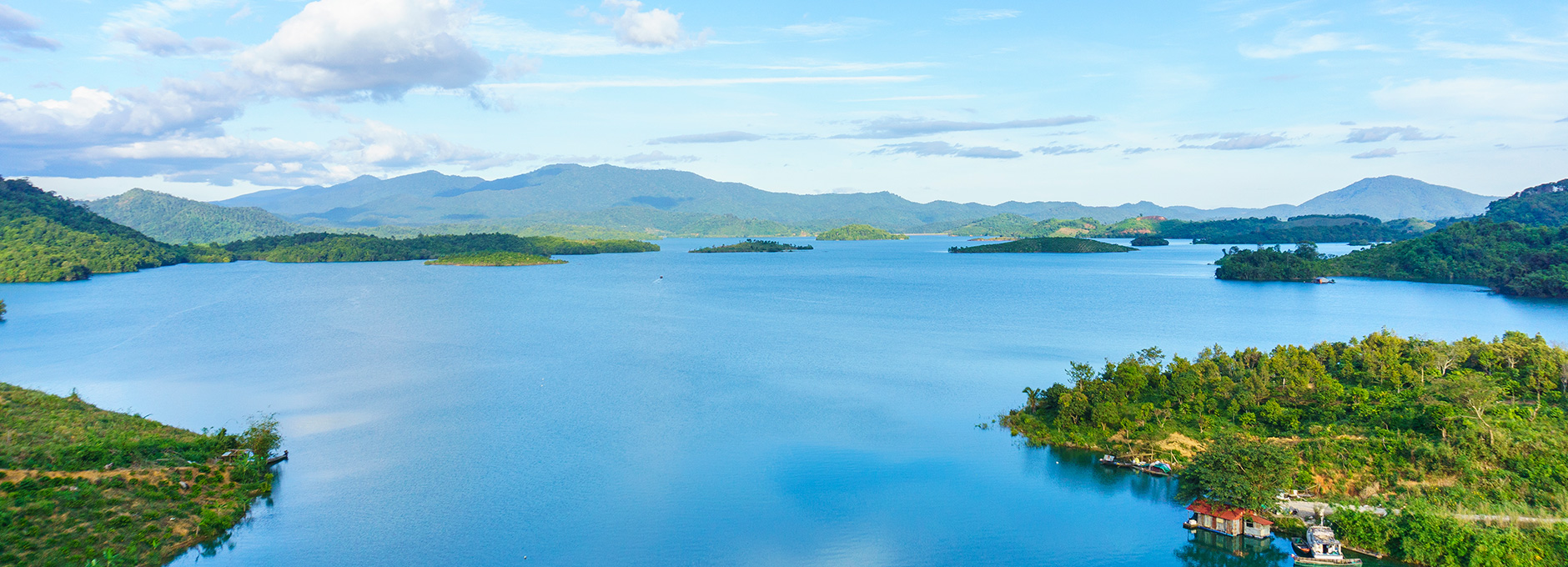Task XII: Hydropower & the Environment Task 1: Managing the Carbon Balance of Freshwater Reservoirs (2007 - Present)
Objectives
Task 1: Managing the Carbon Blance of Freshwater Reservoirs
In the present state of the art on hydropower reservoir GHG emissions numerous uncertainties and diverging positions preclude their consideration in energy policies, legislations and regulations. Recognizing this fact, the IEA Hydropower Implementing Agreement on Hydropower Technologies and Programmes (IEA Hydro) started a new Annex on managing the carbon balance in freshwater reservoirs. The objectives of Annex XII, through a comprehensive work program, are to increase knowledge on processes connected to man-made reservoir GHG emissions, establish best practice guidelines for planning studies on the carbon balance in reservoirs and standardize GHG flux evaluation methods.
The objectives of the comprehensive Annex XII Task 1 work program are to:
- increase knowledge of processes linked to reservoir GHG emissions
- establish guidelines for planning studies on the carbon balance in reservoirs
- standardize GHG flux evaluation methods
- develop an acceptable methodology to measure, model and manage the carbon balance in reservoirs
Deliverables

Guidelines for the Quantitative Analysis of Net GHG Emissions from Reservoirs - issued in 2 volumes
VOLUME 1: Measurement Programmes and Data Analysis
The scope of the guidelines is to identify best practice to help users obtain a reference framework for performing quantitative analysis of net GHG emissions from man-made reservoirs. From this they can undertake sufficient analysis and study to understand the process of GHG emissions from an existing or planned reservoir. The knowledge contained in these guidelines was sourced from a range of industry practice and the experience of scientists and academics, and experts from hydropower industry. These guidelines provide best practice that aims to assist the reader to measure, analyze data and model net GHG emissions from multipurpose reservoirs. Volume 1 addresses measurement programs and data analysis.
VOLUME 2: Modeling
This state-of-the-art document, Guidelines for Quantitative Analysis of Net GHG Emissions from Reservoirs (Guidelines), defines procedures and best practices for the modeling of Greenhouse Gas (GHG) Emissions from Freshwater Reservoirs. It provides users with a reference framework for performing quantitative analysis of net GHG emissions and changes in carbon stock. From this reference a sufficient analysis and study to understand the process of GHG emissions from an existing or planned reservoir can be completed. The Guidelines contain a set of suggested requirements for models and modeling approaches, sourced from the experience of engineers, scientists and academics, and experts from the hydropower industry. This work also provides a roadmap for communicating the science of modeling outcomes in terms that are both appropriate for use by the hydropower industry and acceptable by the broader scientific and engineering community.
 VOLUME 3: Management, Mitigation and Allocation
VOLUME 3: Management, Mitigation and Allocation
This state-of-the-art Guideline identifies best practices and provides a reference framework for the management, mitigation and allocation of net GHG emissions from freshwater reservoirs. This Guideline is generally applicable for new and existing projects where screening indicates the likelihood of significant levels of net GHG emissions, which are based on exceeding a threshold value. However, these Guidelines do not recommend a specific threshold value, but rather outline approaches that are presently considered to have credibility. Where the expected emissions are within acceptable levels, as indicated by the threshold, no further action is required, except under specific circumstances.
This Guideline provides an introduction to the need, objectives and scope of this work. A roadmap provides guidance to identify projects where the development of a GHG emissions management strategy is appropriate and under what conditions. A general description of the main modules for a management strategy covering net GHG emission assessments is outlined. This includes developing an understanding of GHG emissions, preparing a GHG management plan and addressing governance framework.
Methodology
See the published Guidelines for information.
Workshops
Since the kickoff meeting in August 2009 at CEPEL’s offices in Rio de Janeiro, Brazil, 23 meetings of the Annex XII Task 1 have been held. These have comprised 17 Annex Meetings and Workshops and 6 Open Workshops.
Tasks
Task 1: Managing the Carbon Balance of Freshwater Reservoirs
Brazil is leading this major initiative with CEPEL as the Project Manager, and the work undertaken by CEPEL in partnership with Brazilian and other universities and research institutions from ExCo member countries
(Task 2: Update of Annex III Recommendations was completed 2012. Information on this task and a copy of the report can be found under Completed Activities)
Task Members
Australia, Brazil, China, Japan, Finland, France, Norway and the USA.
Participation
IEA Hydro invites interested parties to contribute to this program of work, starting with participation in the Annex meetings and panel discussions. For more information, please contact:
Operating Agent
Jorge Machado Damazio
CEPEL - Centro de Pesquisas de Energia Elétrica/Electrical Energy Research Cente Departamento de Otimização Energética e Meio Ambiente
Ave Horácio Maecedo, 354
Cidade Universitária
CEP 21944-970
Rio de Janeiro - RJ
BRAZIL
Tel: +55-21-2598 6086
Email: damazio@cepel.br
Annex Members' Login
Certain annex information is protected and can only be accessed by members. Please login with your username and password to view the page.


